This Religion Called Christianity 4
Mike Ervin
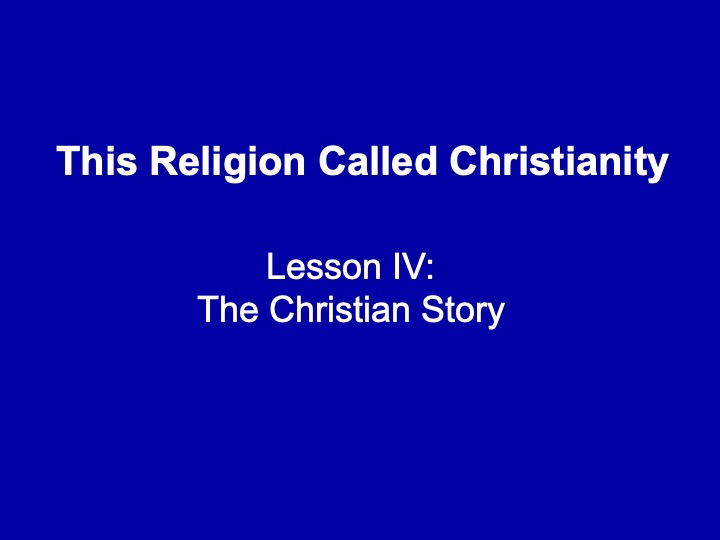
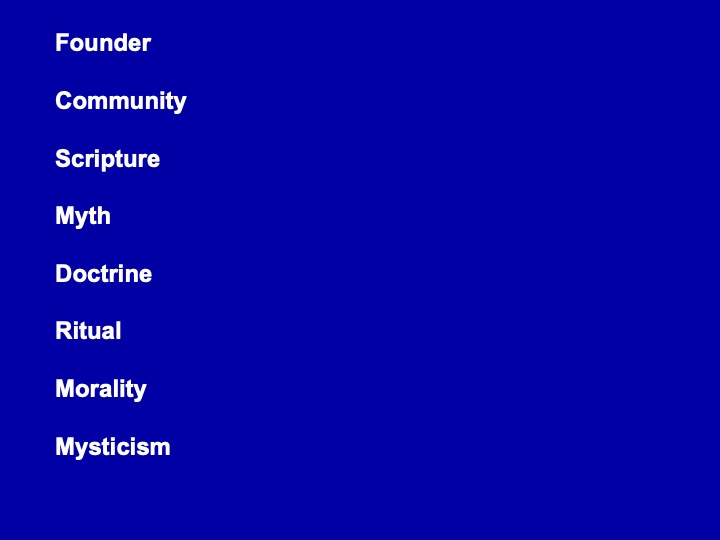
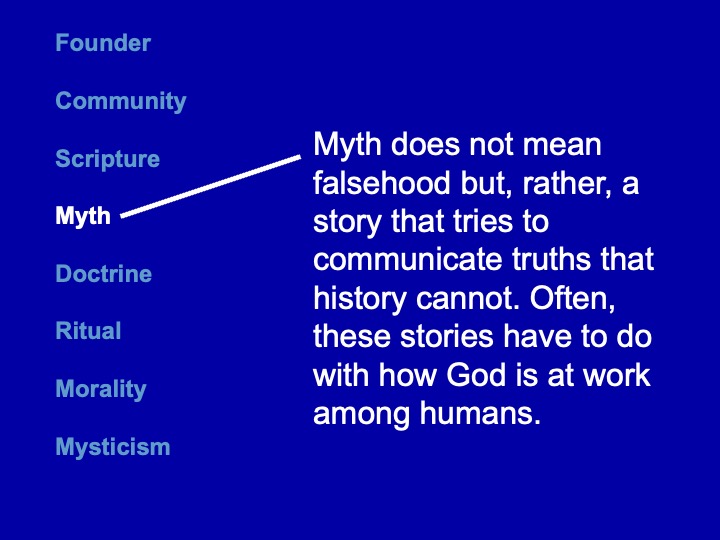
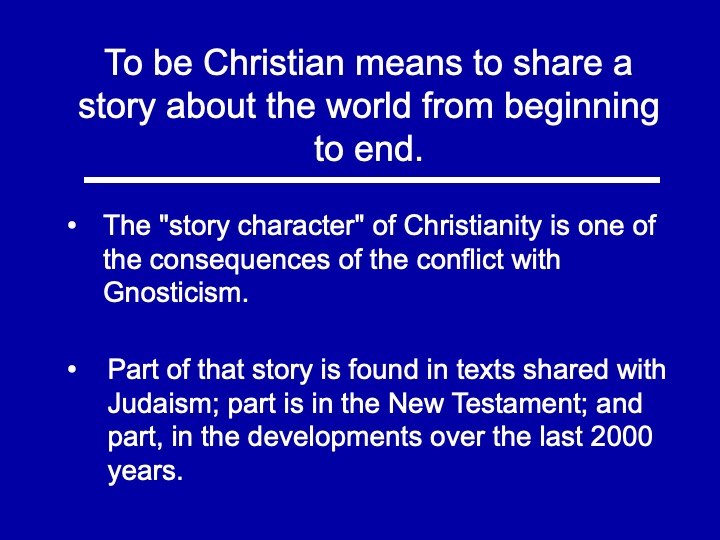
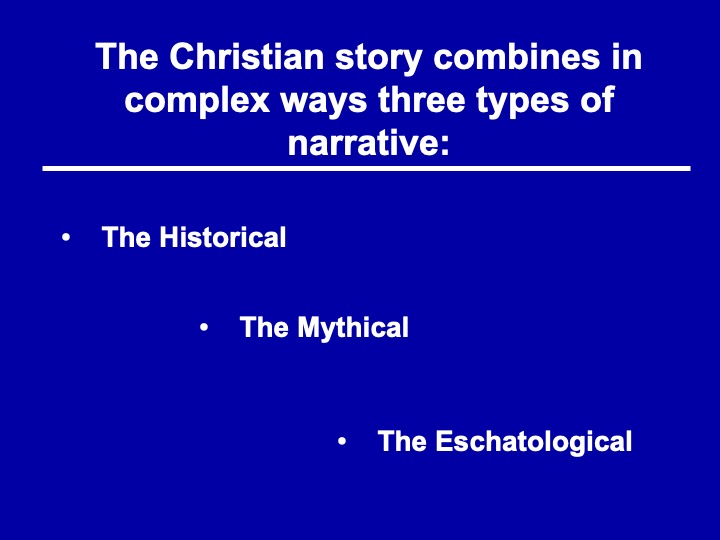
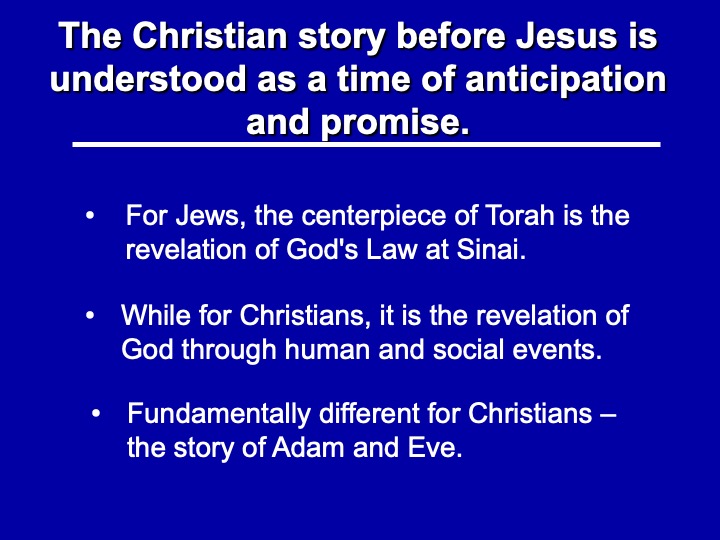
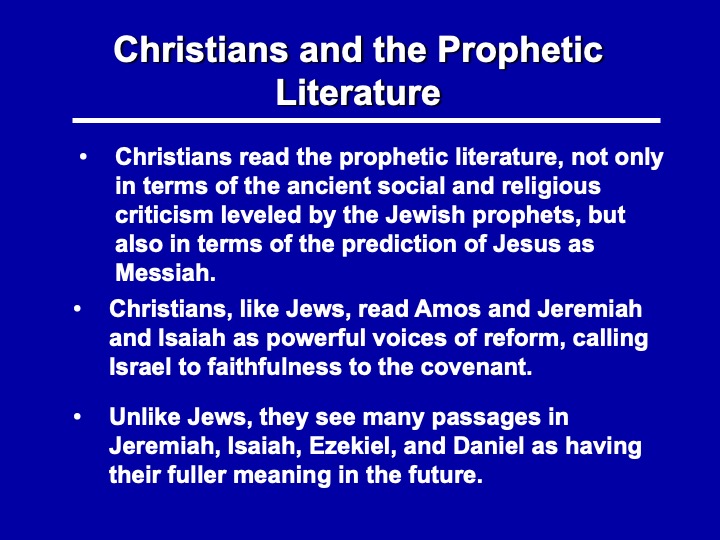

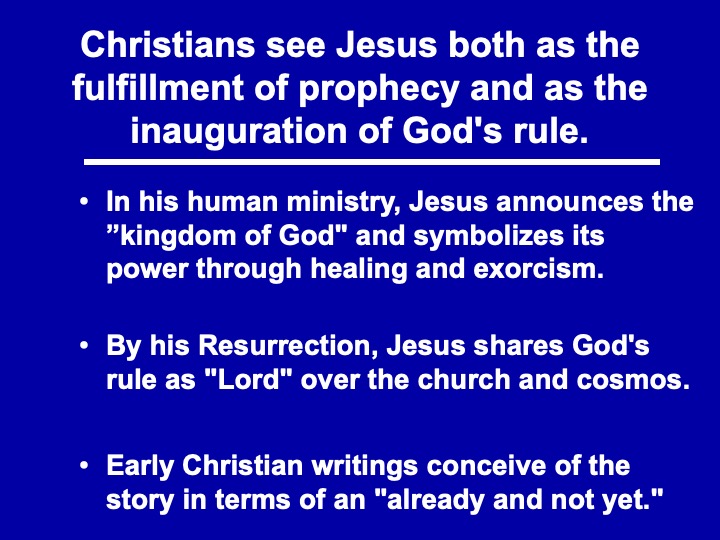
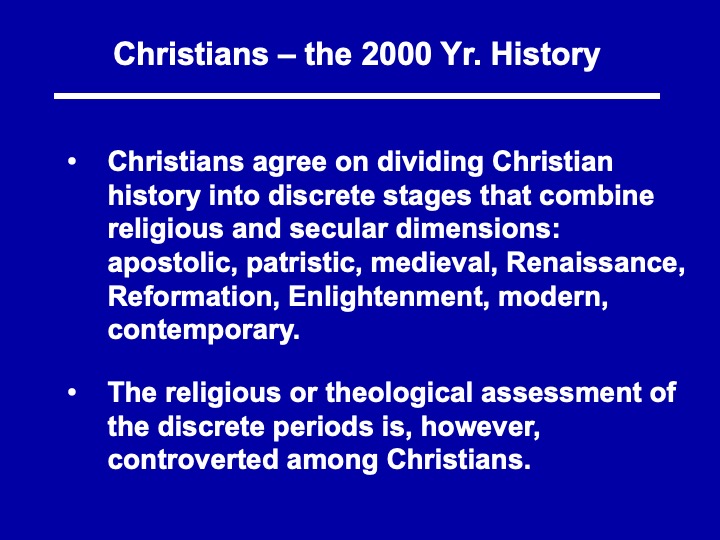
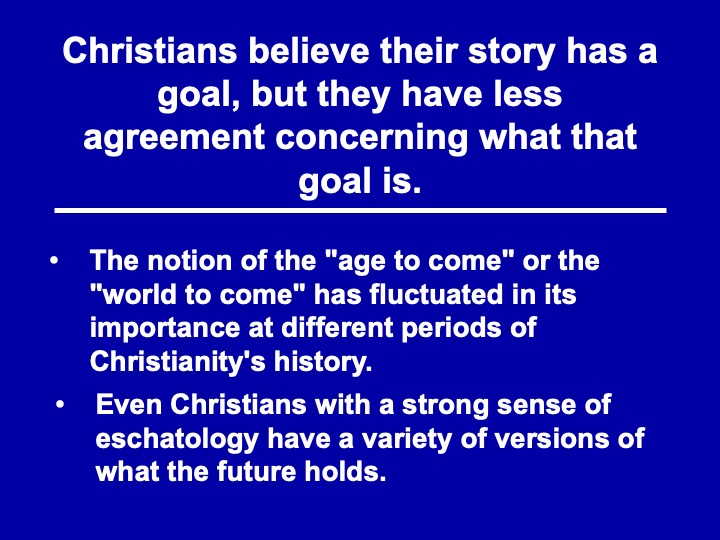
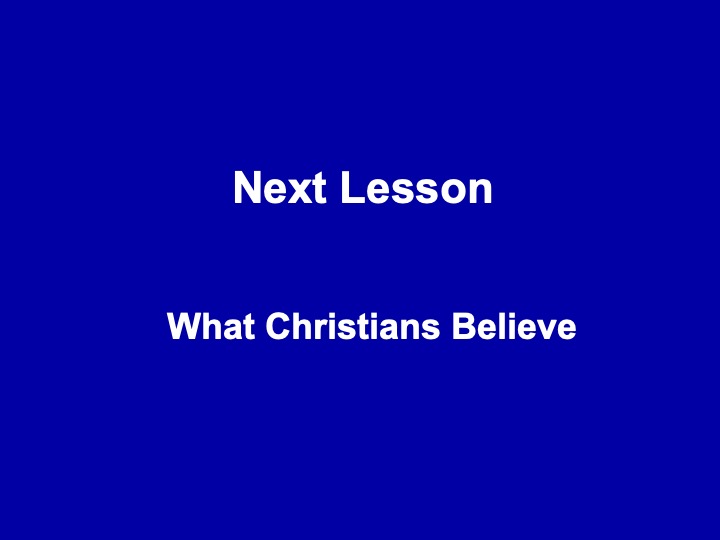
This Religion Called Christianity
Links
< Home Page > < This Religion Called Christianity >
Lesson Four - This Religion Called Christianity
The Christian Story
Scope: Christianity is both deeply historical and mythical in its way of seeing the world. History and myth come together in the Christian story, which provides a comprehensive narrative that extends from the creation of the world to the end of time. The basis of this narrative is found in the Christian Scripture, made up of the Old and New Testaments. This presentation shows how Christians share with Jews certain fundamental convictions derived from the Old Testament but differ from Jews in their understanding of them, because of the experience of Jesus as Messiah and Lord. The story of Jesus in the Gospels and Letters of the New Testament represents the Christian reinterpretation of Jewish Scripture and points to the Christian understanding of the age of the church. The New Testament also contains various visions of the future age (or eschatology) that have been diversely understood in Christianity's long history.
Outline - This Religion Called Christianity
I. To be Christian means to share a story about the world from beginning to end.
A. The "story character" of Christianity is one of the consequences of the conflict with Gnosticism, because story bears implications concerning the significance of physical bodies and time.
B. Part of that story is found in texts shared with Judaism (the Old Testament); part is found in the distinctive Christian scriptures (the New Testament); and part, in the developments of the religion over a 2,OOO-year existence.
C. The Christian story combines in complex ways three distinct aspects of temporality: the historical, the mythical, and the eschatological.
1. Christians claim the historical character of much of the story told in the Bible, especially the part concerning Jesus.
2. Yet the designation of myth is appropriate for other parts of the story (see the primordial origins) and for the entire story in part (see the transcendental claim made for empirical events).
3. Christians also struggle with the notion of eschatology (literally, "last things"), both with respect to the future and the present.
This Religion Called Christianity
II. The Christian story before Jesus is understood as a time of anticipation and promise.
A. Christians share with Jews the accounts of creation, the tales of the Patriarchs, the saga of the Exodus and Conquest, the recital of kings, of exiles, and of restorations, but read them from a different perspective.
1. For Jews, the center of Scripture is the revelation of God's Law at Sinai, while for Christians, it is the revelation of God through human and social events.
2. Christians see the ancient story as providing the basic framework for a relationship between God and humans (the covenant) and as a promise that leads to a historical climax in the coming of the Messiah.
B. In particular, Christians read the prophetic literature, not only in terms of the ancient social and religious criticism leveled by the Jewish prophets, but also in terms of the prediction of Jesus as Messiah.
1. Christians, like Jews, read Amos and Jeremiah and Isaiah as powerful voices of reform, calling Israel to faithfulness to the covenant.
2. Unlike Jews, they see many passages in Jeremiah, Isaiah, Ezekiel, and Daniel as having their fuller meaning in the future.
This Religion Called Christianity
III. Christians see Jesus both as the fulfillment of prophecy and as the inauguration of God's rule.
A. In his human ministry, Jesus announces the "rule of God" and symbolizes its power through his works of healing and exorcism.
B. By his Resurrection, Jesus shares God's rule as "Lord" over the church and even the cosmos.
C. The earliest Christian writings conceive of the story in terms of an "already and not yet."
1. The Resurrection of Jesus is the "first fruits" of a cosmic victory that has still not been fully realized.
2. The parousia (Second Coming) of Jesus will represent God's final triumph over sin and death.
This Religion Called Christianity
IV. Christians approach the 2,000-year-long story of the church from multiple perspectives.
A. Christians agree on dividing Christian history into discrete stages that combine religious and secular dimensions: apostolic, patristic, medieval, Renaissance, Reformation, Enlightenment, modern, contemporary.
B. The religious or theological assessment of the discrete periods is, however, controverted among Christians.
V. Christians share the conviction that their story has a goal, but they have less agreement concerning what that goal is.
A. The notion of the "age to come" or the "world to come" has fluctuated in its importance at different periods of Christianity's history.
B. Even Christians with a strong sense of eschatology have a variety of versions of what the future holds.